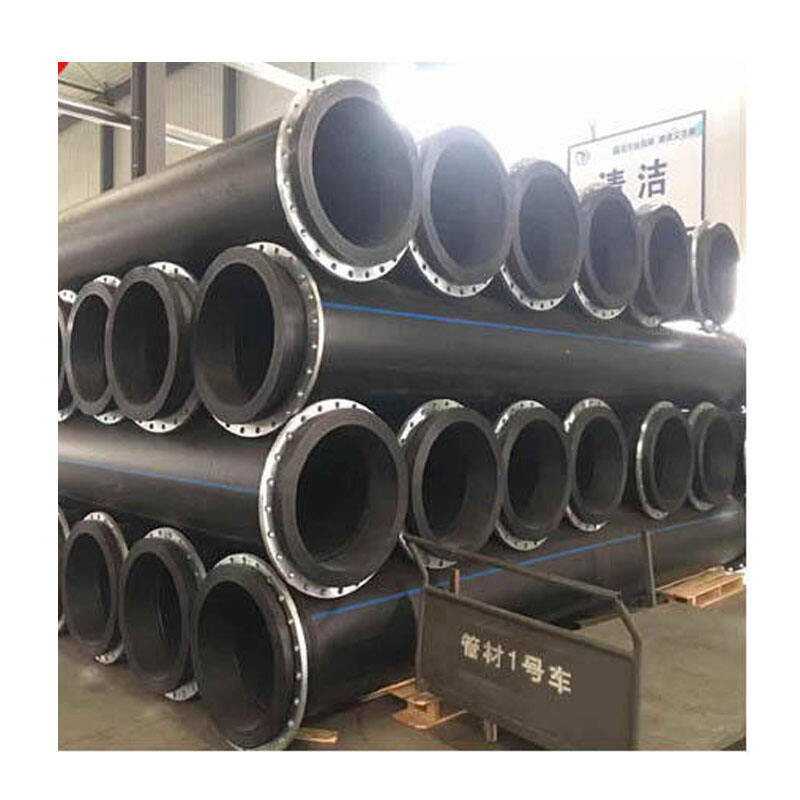Dredging Pipeline Installation: Expert Tips and Best Practices
Understanding Modern Dredging Pipeline Systems
The installation of dredging pipeline systems represents a critical component in marine construction and maintenance operations. These specialized pipeline networks serve as the lifeline for transporting dredged materials efficiently across various marine environments. Success in dredging operations heavily depends on proper pipeline installation, which requires extensive planning, technical expertise, and adherence to industry best practices.
Modern dredging pipeline installations have evolved significantly, incorporating advanced materials and innovative connection methods that enhance both durability and performance. These systems must withstand intense pressures, abrasive materials, and challenging underwater conditions while maintaining optimal flow characteristics for dredged material transport.
Essential Components of Dredging Pipeline Systems
Pipeline Materials and Specifications
The selection of appropriate materials for dredging pipeline installation plays a pivotal role in project success. High-density polyethylene (HDPE), steel, and composite materials are commonly used, each offering distinct advantages for specific applications. Steel pipelines excel in high-pressure situations and offer superior durability, while HDPE provides flexibility and corrosion resistance ideal for temporary installations.
Material thickness, diameter specifications, and pressure ratings must be carefully calculated based on project requirements. The chosen materials must withstand not only the internal pressures of dredged material flow but also external forces from waves, currents, and potential impact from marine vessels or debris.

Connection Systems and Joints
The integrity of a dredging pipeline system largely depends on its connection points and joints. Modern installations utilize various joining methods, including flanged connections, quick-release couplings, and welded joints. Each connection type must be selected based on specific operational requirements, maintenance needs, and environmental conditions.
Professional installers implement robust quality control measures during joint assembly, ensuring proper alignment, seal integrity, and structural stability. Regular inspection and maintenance of these connection points help prevent costly failures and operational downtime.
Site Preparation and Installation Planning
Environmental Assessment Procedures
Before commencing dredging pipeline installation, thorough environmental surveys must be conducted. These assessments evaluate seabed conditions, identify potential obstacles, and determine optimal pipeline routes. Factors such as water depth, current patterns, and seasonal variations in marine conditions significantly influence installation strategies.
Environmental impact studies also play a crucial role in planning, ensuring compliance with local regulations and minimizing disruption to marine ecosystems. Professional teams must develop detailed environmental management plans that address potential risks and outline mitigation measures.
Route Planning and Survey Requirements
Precise route planning involves sophisticated surveying techniques, including multibeam sonar mapping and underwater video inspection. These surveys help identify the most efficient and secure path for the dredging pipeline while avoiding natural obstacles and existing infrastructure.
Advanced positioning systems and real-time monitoring equipment guide installation teams during pipeline placement, ensuring accurate alignment with predetermined routes. This precision helps minimize stress on pipeline components and optimizes overall system performance.
Installation Techniques and Safety Measures
Surface Float and Submerged Methods
The installation of dredging pipeline systems employs various techniques depending on project requirements and environmental conditions. Surface float methods utilize buoyancy devices to support pipeline segments during placement, while submerged techniques involve controlled sinking of pre-assembled sections.
Each installation method requires specialized equipment and expertise to ensure proper positioning and anchoring. Safety protocols must be strictly followed, particularly when working with heavy pipeline components in marine environments.
Anchoring and Stabilization Systems
Proper anchoring and stabilization are essential for maintaining pipeline integrity during operation. Various anchoring systems, including concrete blocks, screw anchors, and chain systems, secure the pipeline against movement caused by currents and wave action.
Professional installation teams carefully calculate anchor spacing and loading requirements based on environmental forces and operational conditions. Regular monitoring of anchor points ensures continued stability throughout the pipeline's operational life.
Maintenance and Performance Optimization
Monitoring and Inspection Protocols
Regular monitoring of dredging pipeline systems is crucial for maintaining optimal performance and preventing failures. Advanced monitoring technologies, including pressure sensors and flow meters, provide real-time data on system operation.
Inspection schedules must be established and followed rigorously, with particular attention paid to high-stress areas and connection points. Early detection of potential issues allows for proactive maintenance and prevents costly emergency repairs.
Preventive Maintenance Strategies
Implementing comprehensive preventive maintenance programs helps extend the operational life of dredging pipeline systems. These programs include regular cleaning operations, component replacement schedules, and systematic integrity assessments.
Professional maintenance teams document all activities and findings, building valuable databases that inform future maintenance strategies and system improvements. This data-driven approach helps optimize maintenance intervals and reduce operational costs.
Frequently Asked Questions
How long does a typical dredging pipeline installation take?
The duration of a dredging pipeline installation varies significantly based on project scope, environmental conditions, and pipeline length. Typically, medium-sized projects might require 2-4 weeks for installation, while larger systems could take several months to complete. Factors such as weather conditions, permit requirements, and site accessibility can impact the timeline.
What are the main challenges in maintaining dredging pipeline systems?
Primary maintenance challenges include preventing wear from abrasive materials, managing pressure fluctuations, and protecting against environmental factors like corrosion. Regular inspection of joints and wear points, monitoring of system performance, and implementing proper cleaning procedures are essential for addressing these challenges effectively.
How often should dredging pipelines be inspected?
Professional inspection intervals depend on operational intensity and environmental conditions. Generally, visual inspections should occur weekly, while comprehensive structural assessments should be conducted monthly. Critical components like joints and anchor points may require more frequent monitoring, especially in challenging environments or during intensive operations.








